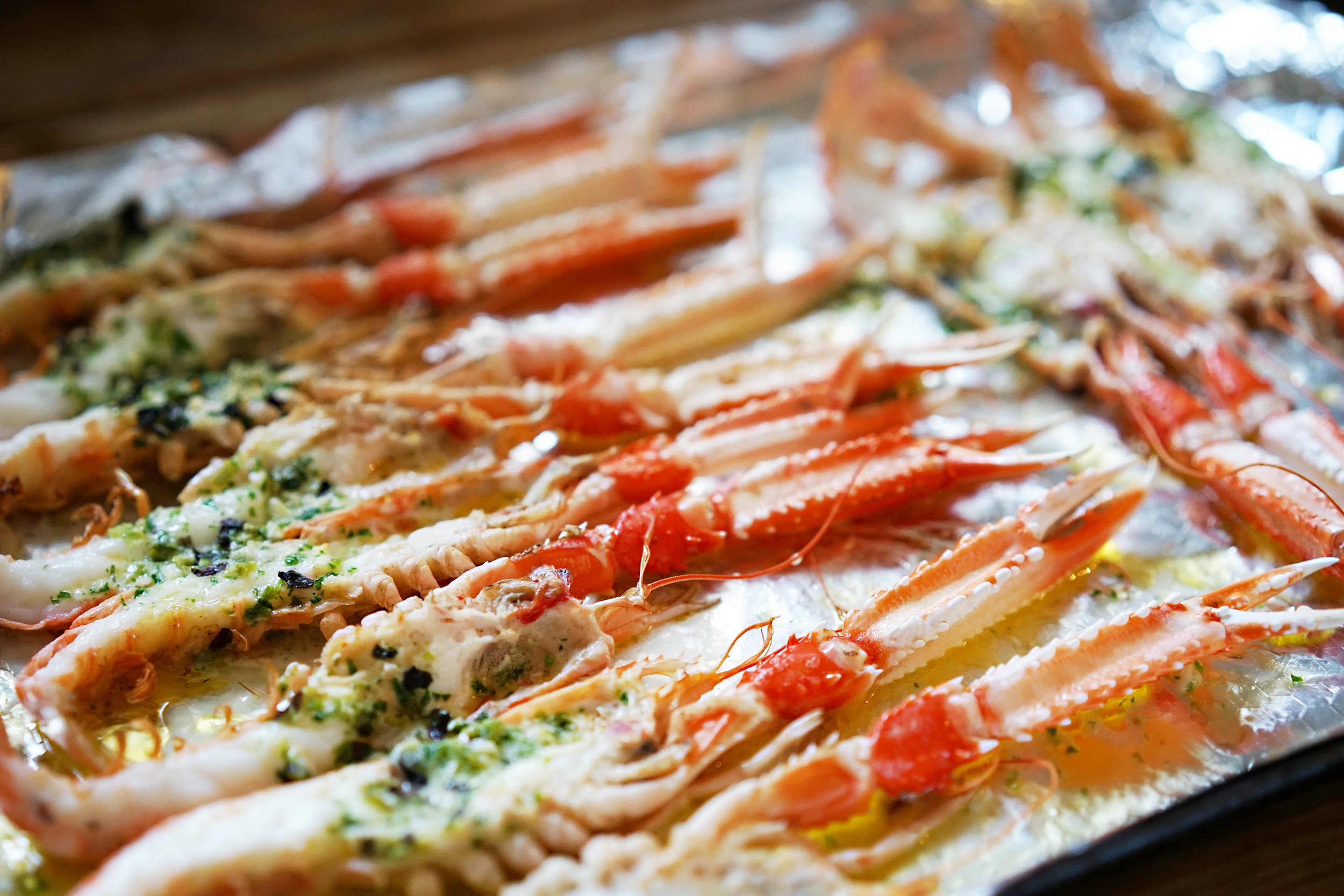How do you grill when you live in the city, but have no patch of green to call your own?
In my London apartment we have a postage-stamp balcony, just big enough to store our mop bucket and a few unloved bottles of wine. Our landlord won’t let us put a grill out there, for fear that a wayward gust of wind might suck flames into the kitchen and set the place alight. I’ve thought about flouting his rules and buying something discreet, a grill small enough to sit directly on the concrete floor, but the image of the kitchen table beginning to kindle always wins out.
All that’s left, then, is our humble oven and its broiler feature (or grill, as it’s known in the UK). It is lacking in many ways. It offers no masculine bravado, no glowing coals and throat-filling heatsmoke, none of those classic optics of summertime—least of all the excuse to relax outside with too many beers and mosquito-studded limbs. I don’t trust it to handle great slabs of pork or steaks or even, really, a burger. But seafood? Seafood, it can do.
Langoustines are roughly the size of crawfish, and taste much more like lobster than shrimp. (Fun fact: they’re sometimes known as “Norwegian lobsters.” You might also see them labeled as Dublin Bay prawns, or even scampi.) Their flesh is buttery, as sweet as melting cream. And as with any already-perfect gift of nature, they are best cooked quickly, with minimal intervention.
In this case: sliced into two hemispheres (there will be some spurting of guts—steel yourself), topped with seaweed compound butter, and thrown under the broiler. To make a proper feast of it, serve warm smashed potatoes on the side, not slicked with mayonnaise but topped with lavender butter and fistfuls of greenery in a way that is suggestive of somewhere on the Mediterranean, perhaps somewhere slightly more idyllic than home.
To go with it all, Gose: the hero of summer, the salty-sour treat, the most perfect beer to drink when it’s almost too hot to move. In this case, Anderson Valley’s classic version. Lemon-tart and saline enough to be noticeable, this is a beer that loves seafood, one that even supplies its own brine.
Have it straight from the can, if you’d like. Go ahead, pull another from the fridge. Open the windows wide and let the street noise pour in. Pretend that it’s actually the whine of distant lawn mowers. Suck the juices from the langoustines’ heads, if you’re not squeamish, or maybe even if you are—here’s to new experiences! Pick every morsel from the shells. Drink. There might be smoke in the air. Convince yourself you can smell it.
Grilled Langoustines with Seaweed Butter and Smashed Potatoes
Serves 2-3
For the seaweed butter
10 ½ tablespoons (150g) salted butter, at room temperature
1 garlic clove, grated
3-4 teaspoons toasted, finely chopped seaweed, such as nori or dulse
1 tablespoon fresh tarragon, roughly chopped
For the potatoes
1 pound (450g) small new potatoes, scrubbed but not peeled
Fine sea salt
2-3 tablespoons olive oil
3 ½ tablespoons (50g) salted butter
2 teaspoons dried lavender
Flaky sea salt, such as Maldon
Freshly ground black pepper
Zest of 1 lemon
Large handful fresh parsley, chopped
Large handful fresh tarragon, chopped
4 scallions, finely sliced
For the langoustines
10-12 langoustines
Flaky sea salt, such as Maldon
Juice of 1 lime
1. First, make the seaweed butter. Add the butter to a food processor and blend until it has a whipped, airy consistency. Add the garlic, seaweed, and tarragon, and blend until combined. Place a rectangle of parchment paper on your counter, and dollop the butter in the middle. Using a spatula, spread the butter into a long, thin rectangle. Roll the paper around the butter, and gently compact it, so you have a log-like shape. Twist the ends of the parchment paper to secure and chill until firm, at least 30-45 minutes.
2. Prepare the potatoes. Add to a large saucepan, and halve any potatoes that are significantly larger than the rest. Cover with cold water. Place over medium-high heat and bring to a boil. Once the water is boiling, salt it very well, cover, and turn down to a simmer. Cook for approximately 15 minutes, or until the potatoes are just fork-tender but not falling apart. Drain, and transfer to a cutting board. Leave to cool for five minutes.
3. Once the potatoes are cool enough to handle, take one and, using the base of the saucepan, lightly smash. You still want it to remain whole, but gently flattened. Repeat with the remaining potatoes.
4. Place a heavy-bottomed frying pan—preferably cast-iron—over high heat. Add the olive oil. Once hot, add the potatoes (you’ll likely need to cook them in two batches) and cook for 2-3 minutes, or until nicely darkened. Flip and cook on the reverse for roughly two minutes more. Transfer to a serving platter or bowl and repeat until all the potatoes are cooked.
5. In a small saucepan, add the salted butter (not the seaweed butter) and place over medium heat. Once melted, add the lavender. Cook for roughly two minutes, or until fragrant. Remove from the heat and drizzle over the potatoes.
6. Top the potatoes with flaky sea salt to taste, copious amounts of black pepper, lemon zest, the fresh herbs, and the scallions. Toss lightly and set aside.
7. Finally, prepare the langoustines. Rinse well under cold running water and pat to dry. Using a very sharp chef’s knife, slice each langoustine in half: place the tip of the knife in the langoustine’s thorax, and bring it down so it slices cleanly through the tail. Turn the langoustine and, finding the cut you made previously, slice evenly through its head. Separate the two halves, and remove any gunk from the head as well as the dark vein running through the tail. Repeat with the remaining langoustines.
8. Turn the broiler/grill setting on your oven to high. Line a large baking tray with foil and arrange the langoustines, cut sides up (you may have to cook them in two batches, depending on the size of your tray). Remove the seaweed butter from the fridge. Cut into ½-inch slices, and then cut each slice into half-moons. Arrange two pieces of butter over each langoustine. Season with an additional pinch of sea salt.
9. Broil the langoustines for roughly three minutes, until they’re opaque and just cooked-through. Remove from the oven. Squeeze over the lime and divide between plates. Serve immediately, alongside the potatoes.





























